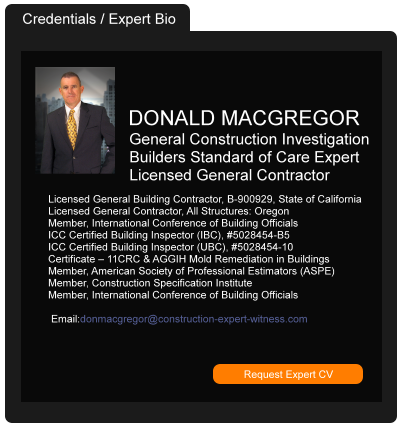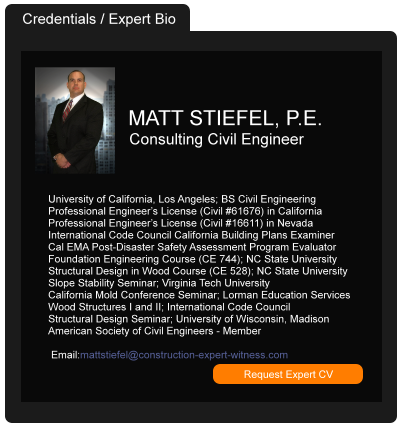Is Your Business Insured for the Coronavirus?
March 16, 2020 —
J. Kelby Van Patten & Jared De Jong - Payne & FearsHow bad will the pandemic get? How much will it spread in the United States? Will we develop a vaccine in time to do any good?
As insurance lawyers, we have no idea. But we can help you figure out whether your business is insured for the coronavirus risks that keep business owners up at night.
Risk 1: An outbreak forces my business to close until the outbreak ends. Are my financial business losses covered?
Maybe. Many commercial property policies provide “business interruption coverage” which may apply.
This coverage typically requires that:
(i) Your business is shut down. If your business actually closes for a period of time, you may meet this requirement. However, you wouldn’t meet it if your business slows because half of your staff is home sick.
(ii) The shutdown is necessary. “Necessary” means something different than “desirable” or “prudent.” Whether a shutdown is necessary depends on the facts. If it is physically or legally impossible to enter your building, then closure is necessary. But if the government issues a public advisory recommending that businesses close, and you voluntarily comply, that’s a different story.
(iii) The shutdown is caused by physical damage to your property. Is a viral outbreak “damage” to your property? There’s not a clear answer. On the one hand, courts have found that hazardous contamination of a building constitutes property damage to the building. For example, asbestos incorporated into a building constitutes property damage to the building under a commercial general liability policy. Environmental contamination can also constitute property damage to the contaminated property. Policyholders whose businesses close during an outbreak will argue that property contaminated by the virus satisfies the “physical damage to property” requirement. On the other hand, insurers may argue that the real cause of the shutdown is not the contaminated building surfaces, but the need for social distancing in a neighborhood with many contagious people. Coverage will depend on the policy language and the details of the shutdown.
Reprinted courtesy of
J. Kelby Van Patten, Payne & Fears and
Jared De Jong, Payne & Fears
Mr. Van may be contacted at kvp@paynefears.com
Mr. Jong may be contacted at jdj@paynefears.com
Read the court decisionRead the full story...Reprinted courtesy of
Open & Known Hazards Under the Kinsman Exception to Privette
February 15, 2018 —
Frances Ma & Lawrence S. Zucker II – Haight Brown & Bonesteel LLP Publications & InsightsGonzalez v. Mathis, 2018 WL 718528 confirms the difficulties a defendant will face when trying to overcome the Kinsman exception to the
Privette doctrine on a dispositive motion when dealing with an open and obvious hazard. There, a professional window washer fell off a roof while walking along a parapet wall constructed by the owner of a home.
The window washer filed suit against the homeowner and alleged three dangerous conditions on the roof: (1) the parapet wall forced those who needed to access a skylight to walk along an exposed two-foot ledge that lacked a safety railing; (2) dilapidated and slippery roof shingles; and (3) the lack of tie off points that would allow maintenance workers to secure themselves with ropes or harnesses. The homeowner filed a motion for summary judgment under
Privette v. Superior Court (1993) 5 Cal.4th 689 and its progeny which prohibits an independent contractor from suing his or her hirer for workplace injuries (
“Privette doctrine”).
There are two exceptions to the
Privette doctrine. First, a hirer cannot avoid liability when he or she exercises control over the manner and means in which a contractor does his or her work and that control contributes to the injuries sustained – known as the
“Hooker exception” (premised on the holding of
Hooker v. Department of Transportation (2002) 27 Cal.4th 198). Second, a hirer may be found liable if he or she fails to warn the contractor of a concealed hazard on the premises – known as the
“Kinsman exception” (premised on the holding of
Kinsman v. Unocal Corp. (2005)).
Reprinted courtesy of
Frances Ma, Haight Brown & Bonesteel LLP and
Lawrence S. Zucker II, Haight Brown & Bonesteel LLP
Ms. Ma may be contacted at fma@hbblaw.com
Mr. Zucker may be contacted at lzucker@hbblaw.com
Read the court decisionRead the full story...Reprinted courtesy of
Pennsylvania: Searching Questions Ahead of Oral Argument in Domtar
October 08, 2014 —
Robert Caplan – White and Williams LLPIf you have been following our coverage of Liberty Mutual Insurance Company v. Domtar Paper Co., you will recall that the Supreme Court of Pennsylvania decided on May 29, 2014 to hear the subrogated insurer’s appeal,1 despite the Superior Court’s holding against the subrogated insurer—based primarily on its own defective case law2 —and its denial of reargument, presumably due to the insurer’s briefing follies.3
The parties in Domtar, as well as numerous amici curiae (friends of the court),4 have submitted their respective briefs over the last few months, and the Supreme Court has scheduled oral argument to take place on October 8, 2014 in Pittsburgh, Pa. The Court has framed the issue as: “Does Section 319 of the Pennsylvania Workers’ Compensation Act, 77 P.S. § 671, allow the employer/insurer to step into the shoes of the insured employee to subrogate against the tortfeasor?”5
There are three possible outcomes in Domtar.
The first (and easiest) possible outcome for the Supreme Court would be to punt to the Pennsylvania General Assembly for a decision on the issue. Workers’ compensation legislation, perhaps more than any other type of legislation, “creates a highly structured balancing of competing interests.”6 It is basic civics that the legislature has a “superior ability to examine social policy issues and determine legal standards so as to balance competing concerns.”7
Read the court decisionRead the full story...Reprinted courtesy of
Robert Caplan, White and Williams LLPMr. Caplan may be contacted at
caplanr@whiteandwilliams.com
Colorado Court of Appeals to Rule on Arbitrability of an HOA's Construction Defect Claims
November 20, 2013 —
W. Berkeley Mann, Jr. — Higgins, Hopkins, McLain & Roswell, LLCOn October 24, 2013 the Colorado Court of Appeals granted a rare interlocutory appeal in a multi-family residential construction defect case. The Court of Appeals accepted the case ofTriple Crown at Observatory Village Association, Inc. v. Village Homes of Colorado, Inc.(2013 WL 5761028) as an interlocutory appeal after the parties briefed and obtained rulings from the trial court that compelled the case to binding arbitration in lieu of a jury trial on all issues. The appellate decision of October 24, 2013 did not decide the merits of the case, but discussed the issues to be decided in the eventual merits decision. The significance of the issues presented and the interlocutory nature of this appeal both make this case worth watching for further appellate proceedings.
The core issue in this appeal was the applicability of Colorado’s Uniform Arbitration Act (C.R.S. § 13-22-201, et seq.), based on recorded Declarations filed by the developer. The Declarations mandated that the HOA arbitrate any design/construction disputes with the developer. Immediately prior to suit, the Association sought to amend the Declarations in order to avoid the arbitration process for these claims. The interlocutory appellate issues resulted from the trial court’s order compelling the arbitration over the objections of the Association.
The trial court’s decision was based on a reading of the Colorado Revised Non-Profit Corporation Act (“CRNPC,” at C.R.S. § 7-127-107), which was found applicable to the Association.
Read the court decisionRead the full story...Reprinted courtesy of
W. Berkeley Mann, Jr.W. Berkeley Mann, Jr. can be contacted at
mann@hhmrlaw.com
Penalty for Failure to Release Expired Liens
April 02, 2024 —
William L. Porter - Porter Law GroupI was recently contacted by a commercial building owner in the process of trying to sell his building. Two years prior to this, a subcontractor had recorded a mechanics’ lien with the local County Recorder’s office in relation to the owner’s property. The subcontractor recorded the mechanics lien after the subcontractor was not paid by a prime contractor for work the subcontractor had performed on the property. Unfortunately, the subcontractor then failed to file a lawsuit to foreclose on the lien within the requisite ninety (90) day time period for filing a lawsuit to foreclose on the mechanics’ lien. Since the subcontractor missed this 90 day deadline to file the mechanics lien foreclosure lawsuit, the mechanics lien expired and became unenforceable.
Subject to certain exceptions, under California Civil Code Section 8460, a lawsuit to foreclose on a mechanics lien must be filed within ninety (90) days after the mechanics lien is recorded or the mechanics lien expires. Although the mechanics lien had expired, the title company and intended purchaser of the building and property were perhaps understandably insistent that the mechanics lien constituted a cloud on title to the property and must be removed from the official records for the property. The prospective purchaser would not buy the property unless the mechanics’ lien was removed.
Read the court decisionRead the full story...Reprinted courtesy of
William L. Porter, Porter Law GroupMr. Porter may be contacted at
bporter@porterlaw.com
Notice of Claim Sufficient to Invoke Coverage
August 06, 2014 —
Tred R. Eyerly – Insurance Law HawaiiIndirect notice to the insurer was sufficient to trigger coverage for the additional insured under a liability policy. Spoleta Constr., LLC v. Aspen Ins. UK Ltd., 2014 N.Y. App. Div. LEXIS 5174 (N.Y. App. Div. July 11, 2014).
An employee of the subcontractor was injured at the construction project on October 20, 2008. The general contractor was named as an additional insured on the subcontractor's CGL policy with Aspen. Under the subcontract, the subcontractor also agreed to defend and indemnify the general contractor for all claims arising out of the subcontractor's work.
The general contractor did not receive notice of the accident until late December 2009 in a letter from the injured employee's attorney. On January 27, 2010, the general contractor's liability carrier sent a letter to the subcontractor giving notice of the employee's claim and requesting that the subcontractor put its carrier on notice. On February 9, 2010, the subcontractor sent to Aspen a claim form with the January 2010 letter attached.
Read the court decisionRead the full story...Reprinted courtesy of
Tred R. Eyerly, Insurance Law HawaiiMr. Eyerly may be contacted at
te@hawaiilawyer.com
All Aboard! COVID-19 Securities Suit Sets Sail, Implicates D&O Insurance
April 27, 2020 —
Lorelie S. Masters, Michael S. Levine & Geoffrey B. Fehling - Hunton Insurance Recovery BlogIn a prior post, we predicted that novel coronavirus (COVID-19) risks could implicate D&O and similar management liability coverage arising from so-called “event-driven” litigation, a new kind of securities class action that relies on specific adverse events, rather than fraudulent financial disclosures or accounting issues, as the catalyst for targeting both companies and their directors and officers for the resulting drop in stock price. It appears that ship has sailed, so to speak, as Kevin LaCroix at D&O Diary reported over the weekend that a plaintiff shareholder had filed a securities class action lawsuit against Norwegian Cruise Line Holdings, Ltd. alleging that the company employed misleading sales tactics related to the outbreak.
The lawsuit alleges that the cruise line made false and misleading statements or failed to disclose in its securities filings sales tactics by the company that purported to provide customers with unproven or blatantly false statements about COVID-19 to entice customers to purchase cruises. Those allegations rely on two news articles reporting on the company sales practices in the wake of COVID-19: a March 11, 2020 Miami New Times article quoting leaked emails in which a cruise employee reportedly asked sales staff to lie to customers about COVID-19 to protect the company’s bookings; and a March 12, 2020 Washington Post article entitled, “Norwegian Cruise Line Managers Urged Salespeople to Spread Falsehoods about Coronavirus.” The lawsuit alleges that the company’s share price was cut nearly in half following these disclosures.
Reprinted courtesy of Hunton Andrews Kurth attorneys
Lorelie S. Masters,
Michael S. Levine and
Geoffrey B. Fehling
Ms. Masters may be contacted at lmasters@HuntonAK.com
Mr. Levine may be contacted at mlevine@HuntonAK.com
Mr. Fehling may be contacted at gfehling@HuntonAK.com
Read the court decisionRead the full story...Reprinted courtesy of
Over a Hundred Thousand Superstorm Sandy Cases Re-Opened
March 12, 2015 —
Beverley BevenFlorez-CDJ STAFFThe Federal Emergency Management Agency (FEMA) announced yesterday that they will be reopening 144,000 flood insurance claims, reported the New Jersey Law Journal.
The announcement comes weeks after reports that “some insurance companies denied thousands of claims after fraudulently altering engineering reports, as well as complaints that insurance companies systematically underpay on claims because they fear a backlash from FEMA.”
Read the court decisionRead the full story...Reprinted courtesy of


































































